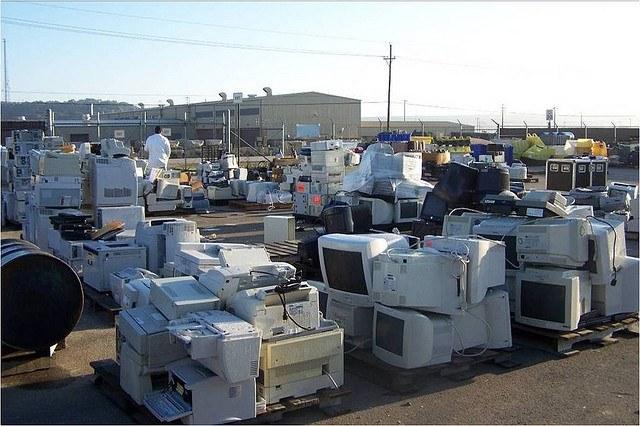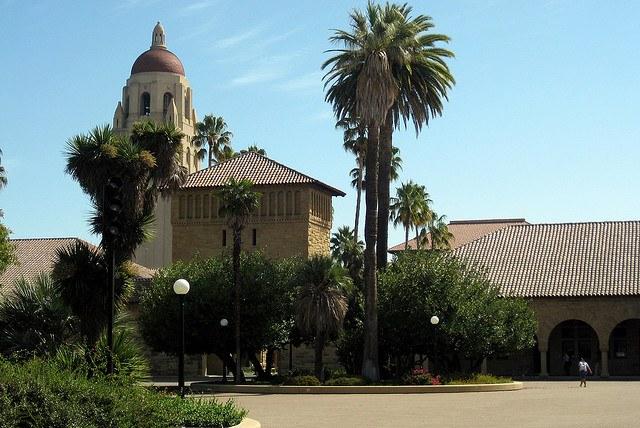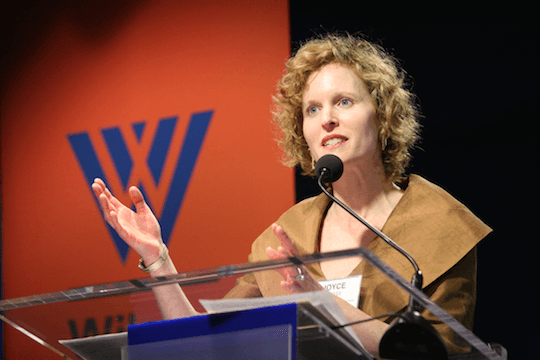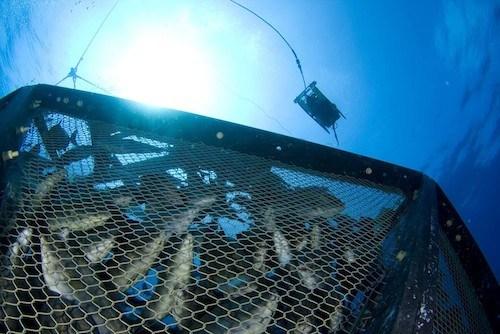Electronic Industry Doubles E-Waste Collection in 2013


The U.S. consumer electronics industry set a new record for electronic waste recycling in 2013, according to a new report. Electronics manufacturers and retailers collected and recycled more than 620 million pounds of e-waste across the country last year – more than double the amount of electronics they recycled three years ago.
The Third Annual Report of the eCycling Leadership Initiative was published in late April by the Consumer Electronics Association (CEA), the technology trade association that represents the U.S. consumer electronics industry and hosts the annual Consumer Electronics Show (CES). The CEA launched the eCycling Leadership Initiative in 2011 as an industry-led effort to bolster consumer awareness of e-waste recycling, improve e-cycling infrastructure and increase e-waste collection, with the goal of recycling 1 billion pounds of electronics annually by 2016 – enough e-waste to fill a 71,000 seat NFL stadium.
Made up of electronics manufacturers, retailers, recyclers, nonprofits and government agencies, the program represents the consumer electronic industry’s move towards extended producer responsibility: a model of product stewardship that requires the manufacturer of a product to take responsibility for the environmental and social impacts of its product throughout the product’s lifecycle – from sourcing the material and production to consumer use and disposal.
Since the eCycling Leadership Initiative’s inception three years ago, the amount of e-waste collected by electronics manufacturers and retailers like Dell and Best Buy has significantly increased, the report revealed: from 300 million pounds in 2011 and 585 million pounds in 2012 to last year’s statistic of 620 million pounds. More than 99 percent of this e-waste was processed by third-party certified “responsible recyclers,” the report stated.
The report also found that Americans now have access to more than 8,000 e-waste collection locations, including retail stores, government-run facilities and nonprofit programs. This number does not include the thousands of additional drop-off sites for mobile devices in retail stores and through mobile carriers like Sprint, the report said. The CEA estimates that the number of collection centers for larger consumer electronics has grown from 5,000 in 2010 to 8,000 today.
CEA recognized Apple, Best Buy, Dell and DIRECTV as “Initiative Leaders” for each exceeding the CEA’s 2013 consumer hardware recycling goals by more than 125 percent, while acknowledging Acer, HP, Samsung, LG and Sony as “Initiative Performers” for surpassing the CEA goals by between 100 and 125 percent.
The report also reflected on current and future challenges facing e-cycling, including the electronics industry’s replacement of cathode ray tube (CRT) glass in televisions and computer monitors with LCD, LED and plasma displays. Because the industry is no longer making new products with CRT technology, manufacturers do not need old CRT glass to recycle into new products, and recyclers can’t find markets for the CRT glass they collect. To tackle this issue, CEA partnered with the Environmental Defense Fund in 2012 and the Institute of Scrap Recycling Industries in 2013 on two CRT Challenges, competitions that sought proposals for new financially viable and environmentally responsible uses for old CRT glass.
The eCycling Leadership Initiative has a long way to go in reaching its “Billion Pound E-Waste Challenge,” especially, as the report noted, when the electronics industry is increasingly making products with reduced weights – a trend that will, no doubt, bring down the initiative’s collection numbers. But it is encouraging to see an industry come together to take responsibility for its products -- to relieve local governments and taxpayers of disposal costs, harmonize collection infrastructure across the country and, ultimately – hopefully – make less toxic, more environmentally-friendly products in the first place.
“We want to make recycling electronics as easy as purchasing electronics,” said CEA President and CEO Gary Shapiro. “Electronics recycling is a national issue, and CEA continues to work toward a national solution to replace the complicated patchwork of rules that varies from state to state.”
You can read the eCycling Leadership Initiative’s four-page report here.
Image credit: Flickr/U.S. Army Environmental Command
Passionate about both writing and sustainability, Alexis Petru is freelance journalist based in the San Francisco Bay Area whose work has appeared on Earth911, Huffington Post and Patch.com. Prior to working as a writer, she coordinated environmental programs for Bay Area cities and counties. Connect with Alexis on Twitter at @alexispetru
Women in CSR: Andrea Learned, Learned On


Welcome to our series of interviews with leading female CSR practitioners where we are learning about what inspires these women and how they found their way to careers in sustainability. Read the rest of the series here.
TriplePundit: Briefly describe your role and responsibilities, and how many years you have been in the business.
Andrea Learned: I’m a thought leadership and business development consultant specializing in social content and social media engagement strategies. I work mainly, but not solely, with sustainability and CSR-focused clients. Helping them amplify their work and forward that business movement is my passion. Overall, I’ve been in marketing consulting for 25+ years, which includes about 10 years of deep expertise in marketing to women (I co-authored the book, Don’t Think Pink). Starting in about 2009, I transitioned into my sustainability-focused corporate leadership and B2B communications consulting.
3p: How has the sustainability program evolved at your company?
AL: I am a sole proprietor (Learned On) with an extremely low “company” footprint, so I’ll answer this question with how it has evolved in my thinking. When I first realized how much my personal values were reflected in my own purchases and in the types of clients I worked with, it was all about better communicating the direct message of “green” or “sustainability.” As both my interest and knowledge have deepened, I’ve become more interested in business development strategies and helping corporate leaders “socialize” their sustainability wisdom – so that it is more indirect, or as I often call it: sustainability hidden in plain sight. Also, where I began my career with more of a B2C marketing and messaging focus, I now concentrate on the individual, professional development angle. This, to me, lends itself to building a “sustainable” pipeline of sustainability and CSR-focused leaders for years to come. I can be much more passionate about socializing sustainability thought leadership than I could be about specific consumer-facing products or services.
3p: Tell us about someone (mentor, sponsor, friend, hero) who affected your sustainability journey, and how.
AL: I’d have to say my peers in the Goddard College Master’s in Sustainable Business and Communities program. I was one of the few “capitalists” in the bunch, so I was incredibly influenced by the energy, determination and passion so many of them showed in starting their own nonprofits, developing community funding sources and creating a better world through innovative and grassroots models. Spending time with these mainly significantly younger people in a gorgeous setting in Vermont every few months only helped us forge stronger bonds.
3p: What is the best advice you have ever received?
AL: It may just have been the bumper sticker (and then a series of friends and mentors reminding me of it along the way), but it is this: Question assumptions. I keep that in mind personally (how I’ve gone about building my business), and I advise clients to do the same with what they write and share.
3p: Can you share a recent accomplishment you are especially proud of?
AL: I get a charge from helping younger people see broader career possibilities and helping them learn to network in the sustainability community (using social media, of course!). If I can pass my knowledge along, and save a future sustainability leader a few steps, I absolutely love it.
As someone who has written about the gender lens on sustainability leadership for a while now, I am also still very proud of a piece of mine that published in The Solutions Journal in early 2011: Gender and the Sustainable Brain.
3p: If you had the power to make one major change at your company or in your industry, what would it be?
AL: To help corporate clients see that, if you engage wisely on social media, no one is “competition.” Everything you do/share should be a body of work that elevates and amplifies the good of the industry (and you will get noticed for it, and be differentiated by it, without a doubt).
3p: Describe your perfect day.
AL: Riding my bike to a meeting in downtown Seattle, coming home and walking my dogs, and having a client or two say, “Wow – I get it,” about social media engagement. Pretty simple.
Stanford Becomes the First Major University to Divest From Coal


As we all know, coal is dirty. It is a fossil fuel and has a big environmental impact, as the Environmental Protection Agency outlines. When coal is burned greenhouse gas emissions, including carbon dioxide, are released. Mining, cleaning and transporting coal also generate emissions. Large amounts of water are used to remove impurities from coal at the mine, and coal-fired power plants use large amounts of water for producing steam and for cooling. Then, there is mountaintop removal -- which blows the tops off of mountains to get to the coal lying beneath.
Stanford University clearly understands just how dirty coal is because its board of trustees, acting on a recommendation from the university’s Advisory Panel on Investment Responsibility and Licensing (APIRL), announced that it will not make direct investments in coal mining companies. Specifically, Stanford will not make direct investments of endowment funds in publicly traded companies whose principal business is coal mining for energy use.
The resolution means that Stanford will not directly invest in about 100 publicly-traded companies whose primary business is mining coal, and will divest of any current holdings in those companies -- making it the first major university to divest from coal. In addition, Stanford will recommend to its external investment managers they they avoid investments in these companies.
"Stanford has a responsibility as a global citizen to promote sustainability for our planet, and we work intensively to do so through our research, our educational programs and our campus operations," said Stanford President John Hennessy. "The university's review has concluded that coal is one of the most carbon-intensive methods of energy generation and that other sources can be readily substituted for it. Moving away from coal in the investment context is a small, but constructive, step while work continues, at Stanford and elsewhere, to develop broadly viable sustainable energy solutions for the future."
In 1971, Stanford adopted the Statement on Investment Responsibility, which states that the trustees’ main obligation in investing endowment funds is to “maximize the financial return on those assets.” However, the statement also allows that when trustees judge “corporate policies or practices cause substantial social injury” they can include this factor in their investment decisions.
A student-led organization called Fossil Free Stanford petitioned the university last year to divest from 200 fossil fuel extraction companies. APIRL’s Environmental Sustainability Subcommittee met with the group and then conducted its own research. “Stanford’s decision is a clear testament to the power of the student movement for divestment and the broader movement to combat climate change,” the group said in a statement.
Although Stanford has not divested from other fossil fuel companies, it may do so in the future. Deborah DeCotis, the chairwoman of the board’s special committee on investment responsibility, told the New York Times, “This is not the ending point. It’s a process.” She added, “We’re a research institute, and as the technology develops to make other forms of alternative energy sources available, we will continue to review and make decisions about things we should not be invested in. Don’t interpret this as a pass on other things.”
Stanford is the not the only organization to divest from coal. In January, a group of 17 foundations with almost $2 billion in assets agreed to divest from fossil fuel stocks, including coal, in their endowments. The foundations that agreed to divest include Ben & Jerry’s Foundation and the Schmidt Family Foundation, created by Google’s executive chairman, Eric Schmidt.
Image credit: Wally Gobetz
Bridging the Climate Adaptation Gap: From Recognition to Action


Editor's note: This is the first post in an ongoing biweekly series on the climate adaptation gap. Stay tuned for future installments here on TriplePundit!
Recent data indicate that a gap exists between corporations understanding the big-picture risks of climate change and their actions to address those risks to shore up their bottom line.
MIT’s Sloan Management Review published results of the annual sustainability survey they conduct with BCG (aka The Boston Consulting Group). In Harvard Business Review's synthesis, they note: “The vast majority of respondents in a new Sloan and BCG survey say climate change isn't a significant issue … And of the 27 percent that acknowledge climate change is a risk to their businesses, only 9 percent say their companies are prepared for the risk.”
In contrast to this data, another corporate survey—the annual World Economic Forum Global Risk Report--says, this year, four out of the top 10 global risks derived from the World Economic Forum’s global risk perception survey relate to climate disruption:
- Water Crisis
- Failure of Climate Change Mitigation and Adaptation
- Greater Incidence of Extreme Weather Events
- Food Crisis
These risks share space with other risks such as high unemployment, fiscal crisis and political and social instability.
As the report starts: “To manage global risks effectively and build resilience to their impacts, better efforts are needed to understand, measure and foresee the evolution of interdependencies between risks, supplementing traditional risk-management tools with new concepts designed for uncertain environments.”
The takeaway from WEF’s report: It’s up to all of us to build and refine the proper measurement tools to ensure we are creating business opportunities that offer rewards for humanity in this era of climate risk. A goal will be to pair other notable trends about sustainability progress to lead the way.
So, based on the WEF numbers, if corporations see a risk, but, based on the MIT numbers, they do nothing about it, that gap suggests that businesses are not yet sure how to manage the risk that a changing climate brings to their value chains.
Since climate adaptation relates to the direct impacts on our most important assets—our employees, our customers, our communities and our families--those who advise corporations possess a great opportunity to demonstrate to their clients the significant collateral benefits of a five-step plan of adaptation action. The five steps are outlined briefly here, and will be rolled out in-depth throughout a six-part, biweekly series on Triple Pundit.
- Examine the relative risks of geographies in supply chains. Where are your most vulnerable communities and supply chains? What resilience can be built to protect these people and assets?
- Identify relevant vulnerabilities in geographies where you maintain significant human and capital assets. Tools like ND Global Adaptation Index can help, plotting countries on a matrix and digging into specific country profiles. When assessing their global risks, corporate leaders can also employ other indices to inform their thinking—from Transparency International’s Corruption Perception Index, to the major credit-rating agencies’ foreign-currency ratings, and the World Economic Forum’s Global Competitiveness Report.
- Review your business-continuity plans based upon these vulnerabilities and risks, perhaps including an economic risk analysis for the most likely issues. If you are just beginning this assessment, draft up a list of questions based on research surrounding steps one and two. Use this information to inform your business-continuity plan.
- List strategies that could be used to prepare your most vulnerable assets. What investment is available and what processes must be taken to secure these assets?
- Create a short and medium-term plan that does three things: 1) Starts with adaptive actions you already are taking as part of your business as usual. 2) Sets priorities of adaptations with collateral benefits; e.g., mitigating greenhouse gas emissions (onsite stormwater management), improving employee morale (work from home options) or buoying your reputation (shoring up public health systems in one of your supplier hubs). 3) And, very importantly, includes financials for avoided risks.
Many cities, including Toronto, New York and London publish their adaptation plans, and they are worth a look for inspiration.
Read more in the Climate Adaptation Gap series:
- Bridging the Climate Adaptation Gap: From Recognition to Action
- Bridging the Climate Adaptation Gap: Relative Risks of Geographies in Supply Chains
- The Climate Adaptation Gap: How to Create a Climate Adaptation Plan
Follow Along Live on our #3pChat Tweet Jam: Sustainable Seafood


In March, we hosted our first #3pChat Tweet Jam on sustainable fashion, featuring prominent sustainable designers and merchandisers from around the world.
Now, on Thursday, May 8th; 12 Noon PST / 3pm EST, we're bringing you our second large "Tweet Jam" on sustainable seafood. We have been running a special sponsored series on the topic for the past several weeks, and now it's time to invite a few experts in for a live conversation, in which you can participate!
Questions of discussion will include:
- The future of "wild" fish, and aquaculture as a solution?
- The efficiency of labeling and consumer responses?
- Do diners care? Can the restaurant industry play a part?
- What is the role of businesses? NGOs? Government?
FOLLOW ALONG LIVE:
ABOUT OUR PANELISTS:
George H. Leonard - Chief Scientist, Ocean Conservancy - @GeorgeHLeonard
George provides science and policy advice to a number of organizational priorities including marine debris, ocean acidification, and sustainable fisheries and aquaculture. Before joining Ocean Conservancy, he developed the scientific foundation for the Seafood Watch program at Monterey Bay Aquarium and helped launch the Communication Partnership for Science and the Sea (COMPASS). He is active member of the twitter-verse on these and other emerging ocean conservation issues.
Tim Fitzgerald - Environmental Defense Fund Oceans Program, Senior Advisor - @hawaiifitz
Tim directs EDF’s sustainable seafood program and is a senior member of EDF’s National Policy team, where he engages the seafood supply chain to advance better fisheries management policies. Tim serves on the conservation board of Ecofish LLC and is an advisor to Fair Trade USA, SeaWeb and the Atlantic States Marine Fisheries Commission. He is a frequent speaker on conservation and health issues concerning the seafood market, and has been featured in the Wall Street Journal, New York Times, and NPR’s Fresh Air, in addition to invited testimony in front of the President’s Commission on the BP Deepwater Horizon Oil Spill.
Jason Simas - iPura Foods, Director of Communications - @iPura
Jason is a graduate of the University of California at Berkeley and founder of Grant, Hamilton & Beck, LLC, a communications consultancy for innovative, purpose-driven and quality-focused brands. He designed and manages social media communications for iPura Foods, a life sciences company focused on Food Safety and Sustainability. He is also the creator of the Sustainable Seafood Bloggers Association set to launch in May.
Clare Leschin-Hoar - Independent Food Writer / Journalist - @c_leschin
Clare is an award-winning journalist who covers food policy, seafood and sustainability trends within the food industry. Her work has appeared in Scientific American, The Guardian and many more. She's a regular contributor at TakePart. Her seafood-specific coverage has recently included stories on the impacts of ocean acidification; turf wars over seafood certification; feed and sea lice solutions in aquaculture, and seafood safety post-Fukushima.
THE DETAILS:
Thursday, May 8th; 12 Noon PST / 3pm EST Follow along on Twitter at: #3pChat
RSVP by sending the following tweet: "Join me May 8 at Noon PST to talk about sustainable seafood w/ @Triplepundit & experts. http://bit.ly/SustyFishTweetJam #3pchat"
Never done this before? Read our primer on how a twitter chat works.
Have a question for our panelists? Leave a comment below or tweet us at @triplepundit. The Tweet Jam will be an hour long and we’ll have a series of conversation starting questions lined up. You’re welcome to jump in any time and add your own thoughts or questions to the dialogue.
Our series sponsors have made this chat possible. Their twitter information is below and we’ve invited them to weigh in during the chat as well.
- Future of Fish - @FutureofFish
- Bell Aquaculture - @BellAquaculture
- Verlasso - @VerlassoSalmon
- Fish Choice - @FishChoice
- Monterey Bay Aquarium; Seafood Watch - @SeafoodWatch
Image credit: Michelle Tsang/Unsplash
Paperless plane no flight of fancy at Easyjet


Easyjet is nearing the era of the paperless plane.
The UK's largest airline with a fleet of 220 Airbus aircraft will complete the fitting of Panasonic Toughpads, in place of laptops and printed navigational charts, in all of its cockpits by the end of this month.
Each aircraft currently carries about 25kg of paper, encompassing forms, checklists and detailed manuals. By removing paper completely, it can improve efficiency and costs, by reducing fuel burn and production and subsequent distribution to easyJet's 24 bases. This will save around half a million dollars in fuel costs alone. It will also reduce the cost of printing and distributing the paper versions of the manuals and forms.
Captain Brian Tyrrell, head of flight pperations for Easyjet said: “Eradicating paper, including the cumbersome manuals with thousands of pages on-board, by providing access to the same information via these devices is an important step in reducing weight but it also means we can improve the speed and efficiency of our communications by remotely saving information and providing crew with up to date information.”
Easyjet's annual fuel bill is around £1.2bn. According to the airline, an Easyjet passenger's carbon footprint is already 22% less than a passenger on a traditional airline flying on the same route and aircraft
Mental health needs to move up wellbeing agenda, says BITC


While the results from the second Business in the Community (BITC) Workwell FTSE100 benchmark showed the average company score on the up, the provision of mental health support continues to be a low scoring area. Indeed, there is almost no reporting of psychological health being measured or addressed.
Stephen Howard, chief executive, BITC, commented: “We are encouraged that the broad picture on public reporting around employee engagement and wellbeing is one of improvement. The findings have shown that what gets measured gets managed, with clear examples of leadership highlighted through this process. However, the lack of reporting on mental health emphasises the culture of silence around this issue. When one in four adults will experience a mental health condition in any given year, there is much to be gained by employers in publically disclosing the specialist support services they do have in place."
The continued low level of reporting on provision of mental health support has led to the development of the BITC Mental Health Champions Group, which pledges to tackle the growing issue of underreporting on mental health, end the culture of silence around mental health in the workplace, and ensure that mental wellbeing is recognised as a strategic boardroom issue.
Although mental health continues to be an underreported area in public reporting of employee engagement and wellbeing, BITC says it is likely that companies have more policies and programmes in operation than they currently report externally but trends, intelligence or learnings from these initiatives are not being put in the public domain. Research5 shows that 85 per cent of UK companies offer an Employee Assistance Programme as part of their support but the benchmark score for the provision of Employee Assistance Programmes only scored six per cent.
Other key findings from this year's benchmark report show that the highest scoring BITC Workwell segments were Diversity and Inclusion (companies with detailed reporting increasing from 25 to 45 per cent) and Health and Safety (from 29 to 60 per cent), showing how compliance drives measurement and reporting. BITC says that Barclays, British Land Company, BT, GSK and RBS were leading companies in the process
You can access a copy of the full report here.
Picture credit: © Alena187 | Dreamstime.com
Sustainable Fish Startups: From the Open Seas to the Inner City


Editor's note: This is the first post in a three-part series on sustainable fish farming startups. You can find the second story here and the third here.
Powered by their rapidly expanding populations, emerging world economies are working hard to close the gap with developed nations. As this trend of convergence continues and accelerates, growth in the coming decades will increasingly focus on the developing world.
Even now about 1 billion people, mostly in developing countries, depend on seafood as their main source of protein. How to feed a hungry and growing population from an increasingly stressed resource, in many places teetering on collapse?
Got fish?
The World Bank estimates that by 2030, as the global population tops 8 billion people, only 38 percent of seafood consumed globally will be wild. The rest, fully 62 percent, must come from fish farming and aquaculture.
As vital as wild fishery preservation is to ocean health and biodiversity, given this outlook for the necessity of farmed fish, the focus for building an adequate source of healthy seafood for human consumption must look to the expansion of sustainable fish farming, aquaculture and aquaponics.
Bringing sustainable fish production to scale requires a variety of new approaches and techniques developed by visionary -- and sometimes controversial -- business startups, operating in diverse circumstances. From the open ocean far offshore to inner-city “post industrial” warehouses, solutions are emerging.
Farmed fish falters
“It used to be individuals that were farming salmon," says Neil Sims, co-founder and CEO of Kampachi Farms on the Big Island of Hawaii. "Often there were salmon fishermen that had increasingly constrained (fishing) seasons and so they went and banged together some boards to make a net pen and bought some salmon fingerlings from the hatchery, they had a couple of net pens out on their dock - and that was pretty poor practices. There was poor siting, it was poorly engineered, under-capitalized, it was unsustainable feeding systems … and it was fairly impactful. It was not well done.”
It wasn’t a good start.
These initial poorly-conceived attempts at fish farming have left a bad taste in many people’s mouths, even as they unwittingly consume farmed fish, sustainably grown or not. Resistance to change is natural, just as it is inevitable. Overcoming resistance to new approaches is an uphill battle. We shouldn’t make light of the genuine environmental concerns and significant challenges that persist with aquaculture and aquaponics, especially if it is to scale to the level required to feed a hungry world. But surely this resistance must be countered, proving to public and expert alike that not only is sustainable, healthy and nutritious fish farming and aquaponics possible, it is essential.
For Sims, what some pejoratively call “factory fish farming” is a promising new, low-impact method of raising healthy native fish in the deep waters off Kona, Hawaii. On the other hand there is Jason Green, founder of Edenworks building a new, whole-systems approach to the centuries-old technology of aquaponics, even while battling preconceived (and Green says unfounded) notions of it as an unscalable means of producing tasteless fish and produce.
From the sultry warm ocean waters off Hawaii to an inner-city factory of post-industrial America comes what could be the answer to the question of how to feed upwards of 11 billion people by century’s end, most of whom will depend in large measure on farmed fish to survive.
First, to Hawaii!
Kampachi Farms: Sustainable harvest in the open ocean
Kampachi Farms, an open-ocean mariculture* startup co-founded by Neil Sims and Michael Bullock, has not only faced stiff opposition from some (not all) environmental groups, but it has also played a central role in helping to define aquaculture law and policy.
Based in Kona, on the Big Island of Hawaii, Kampachi Farms evolved from its predecessor, Kona Blue Water Farms, a firm pioneering basic scientific research in open-ocean aquaculture. Sims and Bullock launched Kampachi Farms in 2011 to leverage their research and begin work on developing efficient, commercial-scale methods of producing sashimi-grade Kampachi near primary markets.
Most mariculture occurs in protected bays and estuaries, where effluents and interactions with wild stocks can easily cause environmental damage. Sims and Bullock believe the only viable solution to scalable and sustainable mariculture is to move it further offshore into deeper waters. And that’s exactly what they did with the start of the Velella Project
*Mariculture refers to growing fish in salt water, aquaculture in fresh water
Velella Project
When I first visited Kampachi Farms’ onshore hatchery, located on the grounds of the Natural Energy Lab in Kona, in the spring of 2012, the “beta” run of the Velella project was well underway. Once the Kampachi fingerlings grown in large onshore tanks were ready, the young, native fish were moved to an untethered deep-water drifter pen riding through the natural eddies flowing around the leeward side of the Big Island. An escort tender ship accompanied the pen to make small course corrections to ensure the pen didn't come near the fragile coral reef system and to provide sustainable, efficient feed, mostly from U.S.-grown soybean products.
At that time, in early 2012, the future of aquaculture and mariculture was uncertain, as a lawsuit brought by Food and Water Watch against the National Oceanic and Atmospheric Administration (NOAA) was wending its way through court. Principal among the issues Food and Water Watch had with NOAA was allowing the Velella project to proceed in federal waters.
Food and Water Watch characterized Velella as “factory fish farming,” challenging its legality in court with the Magnuson-Stevens Act as the basis for its argument. In what was already an uncertain atmosphere, the suit brought the founders of Valella into a complicated area that spanned legislation, the role of governments and NGOs, and how to best help environmental groups understand mariculture.
Image credit: Kampachi Farms
Read the rest of Startups in Sustainable Fish Farming:
- Part 1: Sustainable Fish Startups: From the Open Seas to the Inner City
- Part 2: The Future of Mariculture: Bridging the Gap Between Startups, Lawmakers and NGOs
- Part 3: Sustainable Fish Farming: Global-Scale Aquaculture in the Big City
Should Eco-Labels Shape Purchasing Choices?


Wouldn't it be helpful when shopping for clothes or footwear to know which products contain problematic materials, utilize renewable energy in manufacturing, or enrich their local communities? In theory, eco-labels can provide relevant environmental or social information about a given product to consumers to encourage an environmental goal or objective by shaping purchasing choices. At first glance, eco-labels seem like they could provide such useful information to shoppers, but opinions on their effectiveness have been mixed.
Confusion surrounding eco-labels
What is there not to love about eco-labels? "Eco-labels can shape consumer behavior, and they can also confuse consumers," says Lewis Perkins, Senior VP of Development and Textiles for the Cradle to Cradle Products Innovation Institute in an interview with Triple Pundit. "Depending on who you ask, there are over 300 eco-labels! That’s a lot. There is a lack of consistency among eco-labels: There is not a consistent criteria, measurement, and usage of words. There is too much room for consumers to become confused. Without a lot of education, they will not know which eco-label is inherently good."
Perkins has a vision beyond the current hodgepodge of eco-labels that shoppers encounter, so products can be compared on specific qualities. The Cradle to Cradle Certified Products Standard evaluates products and manufacturers on material health, material utilization, renewable energy and carbon management, water stewardship, and social fairness criteria.
"As an industry, we should invest in consistent messaging, transparency and consistent criteria," he urges. "Otherwise, we’ll continue to invest in confusion."
The organic eco-label is perhaps an exception to the concern that Perkins raises. The term 'organic' is widely used and understood globally; it has a specific criteria, plus availability of organically grown products has increased significantly over the last 10 years.
Eco-labels and the product lifecycle
From cottonseed to landfill, Levi Strauss & Co. commissioned its first lifecycle analysis for a pair of Levi's 501 jeans back in 2007. Utilizing the gained knowledge, the company says, designers can then make choices to mitigate their environmental impact and provide greater transparency to customers regarding environmental performance. The company uses a few eco-labels -- Water<Less™, Care to Air and Organic -- each associated with different initiatives throughout the lifecycle of the product.
Additionally, Levi Strauss & Co. partnered with Goodwill back in 2009 to create the Care Tag for Our Planet, an eco-label that encourages products to be donated after use to extend the product lifecycle and reduce landfill waste. The tag also reminds consumers to wash in cold water and air dry to reduce resource consumption -- reflecting lifecycle analysis data that revealed 45 percent of water use in the lifecycle of a pair of jeans comes from consumer care.
The Water<Less™ eco-label informs consumers about a new technique to reduce water use by up to 96 percent during manufacturing, and the organic eco-label features clothes made from organic cotton and natural dyes.
Innovations in recycling and upcycling
The cradle-to-cradle approaches seeks to learn from nature and create no waste. "The requirement for manufacturers to produce endlessly renewable materials in products is the key," Perkins explains. " Rather than put the onus on consumers, we must first create the system for recollection and reuse. We need the technology and systems in place to make recycling and upcycling apparel both easy and cost effective for all stakeholders. This is the biggest opportunity for the apparel and footwear industry."
With this concept, Patagonia comes to mind with the Common Threads Partnership, which aims to reduce, repair, reuse and finally recycle. This initiative is reducing the quantity of virgin materials in Patagonia products. The company's website states: "Today, you can return any Patagonia product to us and we will reuse it, recycle it into new fabric or make it into a new product." Since 2005, the company has recycled 56.6 tons of worn-out clothing and accessories -- thanks in part to the face-time the program receives via the Common Thread Partnership label and signs in stores.
Unfortunately, Patagonia is lightyears ahead of most clothing companies, and the Common Threads Partnership is a very tangible initiative, which can serve as a model. "Our goal is to not to have more 'eco-labels,' but to create the continuous improvement pathway for companies to design and manufacture products that prioritize safe resources and nutrients that can keep cycling around, continuously with clean water and renewable energy benefiting the companies, people and communities that create them," explains Perkins.
Image credits: BBH Singapore and Charles 🇵🇭 via Unsplash
Global Desalination Challenge Aims For 'Big Outcome That Changes the World'


General Electric (GE) has partnered with oil giant Saudi Aramco to launch a global search for low cost, high efficiency innovations in the field of water desalination -- with the ultimate goal of tapping the seven seas to supplement the world's increasingly stressed freshwater resources. Along the way, the two corporate behemoths just might end up tipping the global energy balance more steeply, and more quickly, in favor of renewable energy sources.
The global desalination innovation challenge involves a soup-to-nuts approach in which all aspects of desalination are open to improvement, including carbon emissions related to the vast amount of energy required by typical desalination processes.
Two mature companies poised for a sea change
If you haven't been keeping up with the latest news out of Saudi Aramco, the tilt toward renewable energy for powering desalination might seem a bit out of character for a petroleum-centric business model. However, Saudi Aramco has been eyeing its home country's vast solar potential, and it has been transitioning into a more diversified energy generation mix with a growing number of innovative solar energy projects.
GE has a bit of a head start, as a company with 130 years of history behind it, and it has long demonstrated the agility to ride historic global trends into value-creating opportunity.
GE's early solar ventures date back to the space race and the 1970s oil crisis. The company also provided a dramatic example of its flexibility back in 2002, when it jumpstarted its wind power efforts by purchasing wind farm assets from Enron (yes, that Enron).
Just a few years later, in 2005, GE launched its ecomagination initiative with the aim of focusing the company on a strategy of developing “innovative solutions to today’s environmental challenges while driving economic growth.”
In the context of the latest Ceres sustainability progress report, the desalination challenge issued by Saudi Aramco and GE demonstrates a collaborative approach toward innovation that leads to global solutions to climate change, water resource management and other critical issues.
The global desalination innovation challenge
GE and Saudi Aramco announced the new desalination challenge last month, with a prize of $200,000 split among four winners, along with future investment and commercialization possibilities.
According to the joint announcement, desalination is emerging as a critical issue in the water-energy nexus:
Current desalination techniques are typically very energy intensive: energy consumption can account for up to 70 percent of the desalination costs. The global production of desalinated water uses approximately 75.2 terawatt-hours of electricity per year, enough to power nearly 7 million homes.
Specifically, the two companies are looking for new solutions that can be applied globally. The areas of focus are cleaner energy sources, the use of advanced materials and improved integration of processes.
That second category could include processes within the desalination operation itself, and it could also encompass new combinations of desalination with other systems (Qatar's Sahara Forest Project demonstrates some of those possibilities).
Meet the voice of ecomagination
Last week, TriplePundit had the opportunity to catch up on the desalination challenge with Deb Frodl, the global executive director of GE ecomagination.
Frodl emphasized that desalination has become a major part of the ecomagination mission, as underscored by the company's partnership with Saudi Aramco.
As this is the fifth challenge issued under the ecomagination umbrella, Frodl expects a high level of participation and high returns. She anticipates that the challenge will "drive a big outcome that changes the world."
Take a look at the wrenching droughts in California, Australia and elsewhere, and you can see how a world-changing approach to global water resources is desperately needed.
Frodl also outlined the overall success of the ecomagination initiative overall. By reaching outside of the company to collaborate with the world's leading innovators, GE has leveraged $12 billion in R&D investment to generate $160 billion in new revenue.
In addition to the new revenue, GE has also applied the innovative approach to its internal operations to outdo its goals for emissions reduction and water resource management.
Since 2004, the company has expanded its operations while reducing greenhouse gas emissions by 34 percent and reducing freshwater use by 47 percent, while saving about $300 million in energy and water costs.
If you want to get your desalination innovation entry into the new challenge, visit ecomagination at ninesights.com and meet the deadline of July 16. Winners will be announced in November.
Image credit: Salt by Tim Sackton